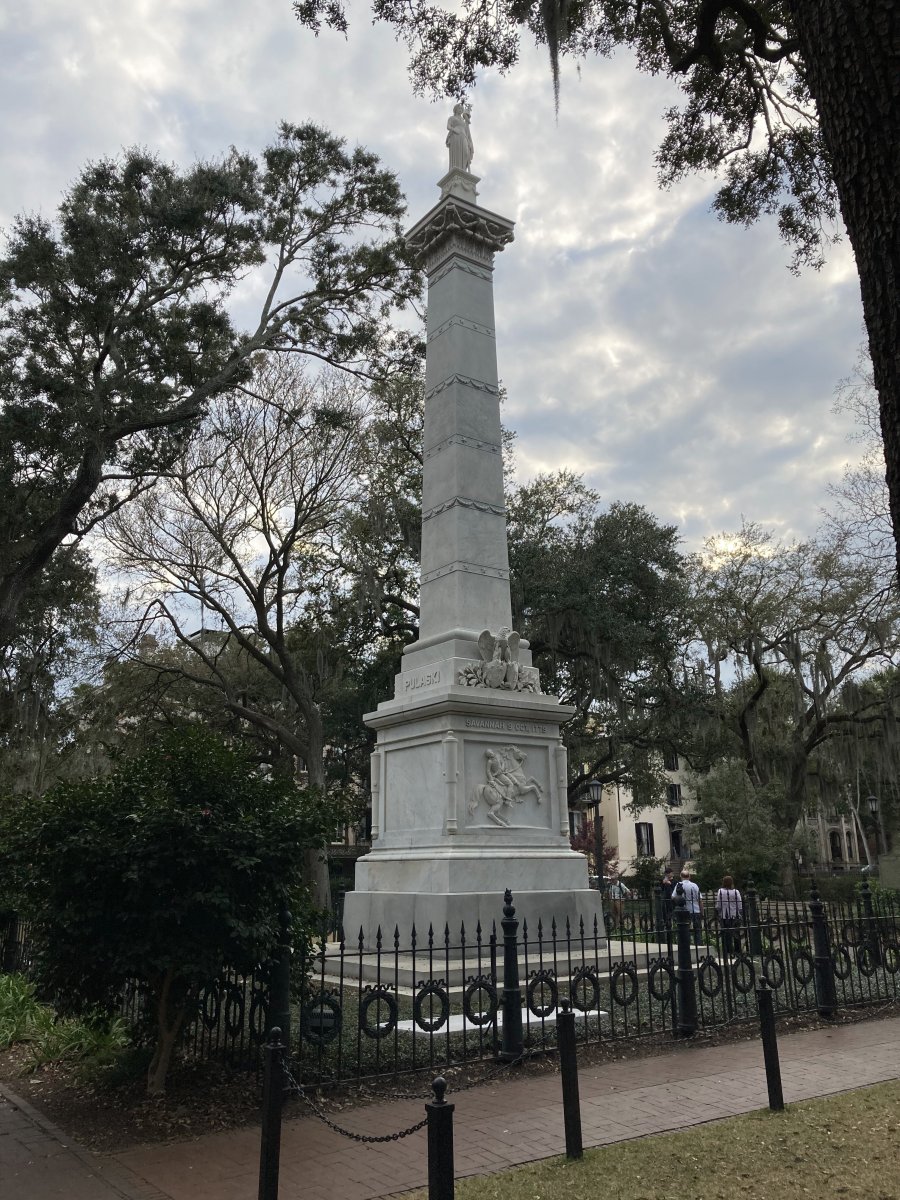February 26, 2021 - Savannah, Georgia
We had never been to Savannah before. What better way to learn about the city than to go on a guided walking tour of the historic area. This turned out to be a great move. Our guide was outstanding. By the end of the two hours, I felt I had a sense of Savannah's history and uniqueness. If we had just walked around ourselves, we wouldn't have learned any of it.
The tour started at this statue of John Wesley, the founder of Methodism, in the middle of one of Reynold's Square, one of Savannah's 22 signature "squares".







Below is the impressive U.S. Custom House.
The U.S. Customs Service, established by the First Congress in 1789, is the oldest federal agency. The Customs Service assesses and collects duties and taxes on imported goods, controls carriers of imports and exports, and combats smuggling and revenue fraud.
Many of you may not be aware that the Federal Income Tax only began in 1913 via the 16th amendment to the Constitution. [Thank you Woodrew Wilson, arguably America's worst President and first, but not last, socialist President. (Also, he was debilitated during the last two years of his Presidency and his wife, Edith, was the acting President. Sound familiar?] Prior to 1913, the primary vehicle for Federal income was through customs. So customs was a big deal back in the day.
The impressive U.S. Custom House symbolizes Savannah's importance to Georgia's import-export trade during the eighteenth and nineteenth centuries. The site is also significant in Savannah's history. A wood-frame residence used by James Edward Oglethorpe, founder (in 1733) of the Colony of Georgia and designer of Savannah's town plan, was previously on the site. The federal courthouse and the Tabernacle, where John Wesley preached his first sermon in America, were located on the rear of this lot.
Savannah's first U.S. Custom House opened in 1789 on Commerce Row on East Bay Street. The second, opened in 1819 on East Bryan Street, burned in 1837. In 1845 the federal government purchased a site at East Bay and Bull Streets for a third U.S. Custom House. New York architect John S. Norris (1804-1876) served as designer and supervisor of construction. The building was the first of eighteen commissions Norris designed while living in Savannah from 1846 to 1861. The cornerstone was laid on July 20, 1848.
The building was completed in 1852 and had the U.S. Post Office in the basement, the Customs Service on the first floor, and the federal courts on the second floor. The notorious case involving the yacht "Wanderer" was tried here in 1860. It was the last documented violation of the law against the importation of slaves. U.S. control of the building temporarily halted in January 1861 when the Confederate flag was raised above it the day after the Georgia State Convention adopted the Ordinance of Secession. In 1864 General William T. Sherman occupied Savannah and returned control of the building to the Union.
The U.S. Custom House was designated as a contributing building in the Savannah National Historic Landmark District in 1966. It was listed in the National Register of Historic Places in 1974.


























